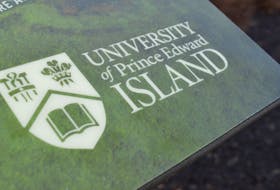The Island Regulatory and Appeals Commission has made a recommendation to approve the proposed amalgamation of the Greater Three Rivers area, albeit with some changes.
IRAC provided its report and recommendation to Communities Minister Richard Brown on Monday to amalgamate Montague, Lower Montague, Georgetown, Valleyfield, Cardigan, Brudenell and Lorne Valley as well as some of the unincorporated communities of the area’s three fire districts.
The minister can accept, modify or reject the commission’s recommendations.
If accepted, the recommendation would result in a new municipality of about 7,500 people.
The full report is available at http://www.irac.pe.ca/infocentre/documents/Municipal-LA18001-Report_to_Minister-Final-092418.pdf
The recommendation included amending the proposed boundaries to exclude “all or portions of” the unincorporated communities of Kinross, Bellevue, Grandview, Riverton, Martinvale, Corraville, Cardross and Glenfanning. IRAC stated that including those communities would limit future possibilities for communities such as Belfast and Central Kings to expand.
The commission also recommended the new municipality’s first council be comprised of six councillors and a mayor, rather than the proposed 12 councillors and a mayor.
It also states the new municipality, with the assistance of the minister, establish wards based on population data rather than existing municipal boundaries in order to avoid an “us vs. them” mentality.
The amalgamation process, which began in 2014, was not without some controversy.
The commission stated it received 1,511 objections, although also noted that many of those were from individuals who did not live in the affected area or whose address could not be verified.
In total, 371 objections were received from residents of the communities while 197 were received from residents of the proposed municipality’s unincorporated areas.
“The rest were received from individuals or groups who do not reside in the municipality or from individuals for whom the commission could not identify their address,” states the report.
For example, the communities that saw the most objections to the Three Rivers proposal came from Summerside at 211 and Freetown at 120. Neither of those communities are included in the proposal.
IRAC also had concerns about the veracity of some of the objections. It noted that the majority of objections were written on a “form” or “template.” Many of those described the process as being undemocratic, did not want their taxes to go up or felt they would receive no services through the new municipality.
“The Commission has given some weight to these “form” or “template” objections. Generally, however, the commission finds that objections with specific, individual concerns are more persuasive than the pre-typed statement,” stated the commission.
The commission noted it was also contacted by legal counsel for the “Rural Coalition of P.E.I.” which was against the proposal. The commission said requests for more information from the legal counsel went unanswered.
During mediation, there was no involvement from unincorporated residents outside of the municipalities.
However, the commission stated that mediator Frank Gillan took their concerns into account. In the mediator report, Gillan said the unincorporated areas had no history of municipal participation or representation and had never paid municipal taxes except for fire dues. Because the inclusion of unincorporated communities, which had a municipal tax rate of zero, would result in a tax increase Gillan recommended their tax rates be kept to a minimum.
Gillan also recommended that, because the municipality would require time to develop an official plan and bylaws, those unincorporated areas should receive a tax holiday to “ensure they were not paying property taxes for services that had yet to be provided.”
“The commission is therefore confident that, although the unincorporated areas were not present at the mediation table, their concerns were considered by the mediator in crafting his proposal.”

![['Island Regulatory and Appeals Commission']](https://saltwire.imgix.net/irac-2604138.png?cs=srgb&fit=crop&h=568&w=847&dpr=1&auto=format%2Cenhance%2Ccompress)







